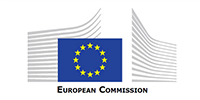
The European Commission has decided to refer the Netherlands to the Court of Justice of the European Union for failing to comply with EU legislation applicable to rail transport. The Commission has issued two separate referrals to the Court, concerning EU railway safety on the one hand and railway interoperability on the other hand.
Rail Safety
Directive 2004/49/EC (“Railway Safety Directive”) requires Member States to establish an independent safety authority and an incident investigation body. Furthermore, Member States are to define common principles for the management, regulation and supervision of railway safety. The purpose of this Directive is to ensure the development and improvement of safety on EU railways and improved access to the market for rail transport services. The Dutch legislation does not comply with this Directive on two accounts: it does not set out the decision-making principles of the safety authority and does not require the respect of a four-month deadline to issue decisions on safety certificates or safety authorisations.
Rail Interoperability
Directive 2008/57/EC lays down the conditions to achieve c in Europe, and guarantee the compatibility of infrastructure, rolling stock, signalling and other rail subsystems across the EU network. This is essential to make the rail sector more competitive towards other transport modes. To date, the Netherlands has, however, failed to transpose into national law the rules on the authorisation to place vehicles into service.
Background
‘Interoperability’ means the ability of a rail system to allow the safe and uninterrupted movement of trains which accomplish the required levels of performance for these lines. This ability depends on all the regulatory, technical and operational conditions which must be met in order to satisfy the essential requirements.
The Commission had already requested the Netherlands to transpose these two Directives through two reasoned opinions sent respectively in October 2015 (rail safety) and September 2014 (rail interoperability). To date, however, no legislative steps have been taken and the Commission, therefore, decided to refer the Netherlands to the Court of Justice of the EU. Today's action is in line with the Commission's objective to ensure Member States' full compliance with rail safety and interoperability rules. Their uniform application is indeed critical to establish an internal market for rail services.
More information
- On the key decisions in the April 2016 infringements package, see MEMO/16/1452.
- Infringements' proceedings in the area of Transport.
- On the general infringement procedure, see MEMO/12/12.
- On infringement procedures.
About European Commission
Transport directly affects everyone in Europe. Whatever age we are, and whatever activities we undertake, transport and mobility play a fundamental role in today’s world. The aim of the Commission is to promote a mobility that is efficient, safe, secure and environmentally friendly and to create the conditions for a competitive industry generating growth and jobs. The issues and challenges connected to this require action at European or even international level; no national government can address them successfully alone. The European Commission’s Directorate-General for Mobility and Transport works in concert with the European Union Member States, European industry, citizens and stakeholders.




Comments
There are no comments yet for this item
Join the discussion